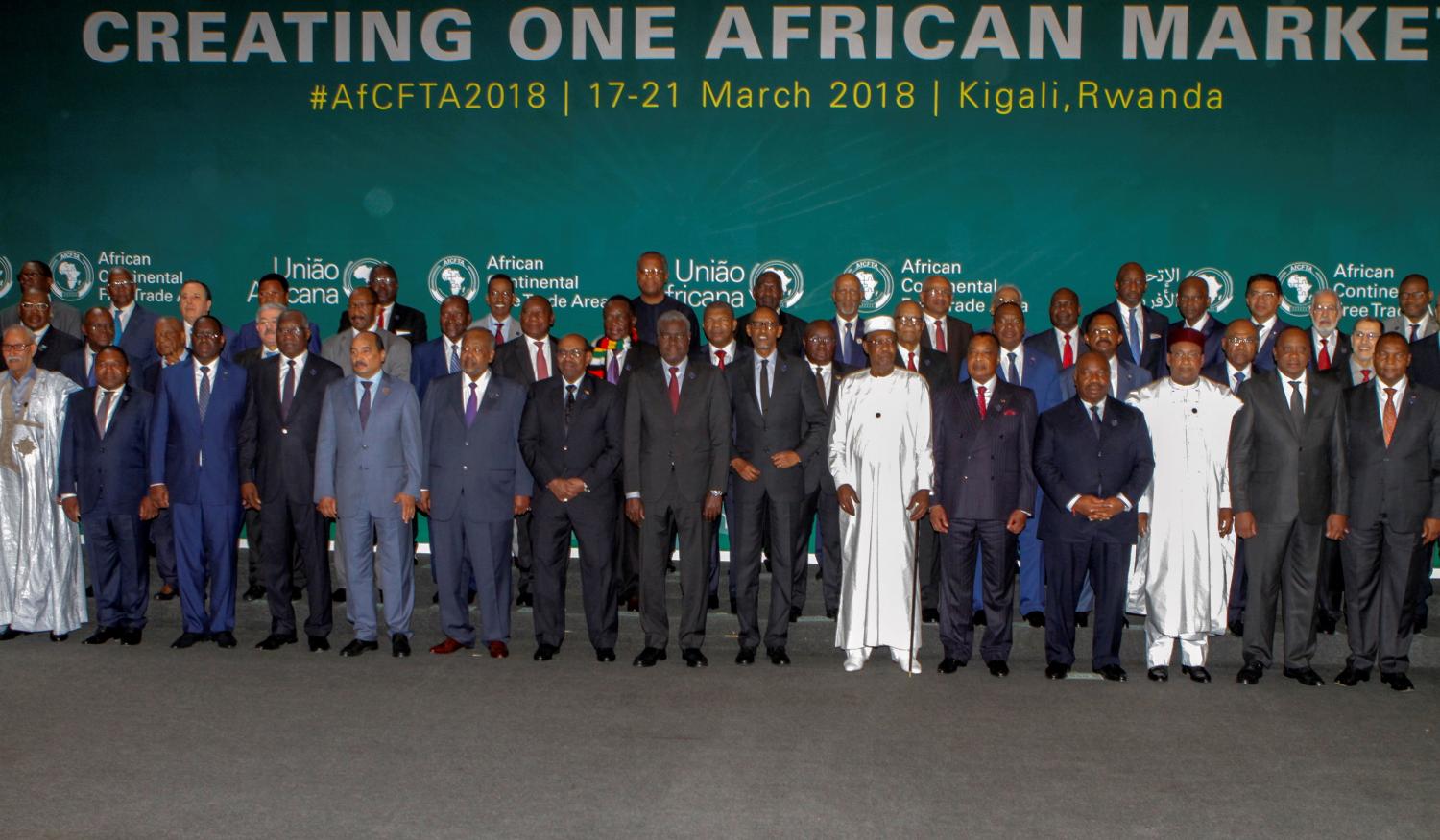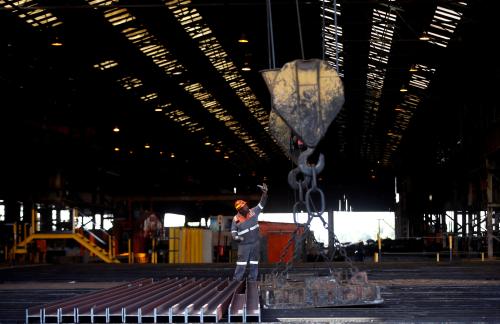INTRODUCTION
As of April 29, 2019, 22 countries have deposited their instruments of ratification of the African Continental Free Trade Area (AfCFTA) agreement1 to the African Union (AU), meeting the threshold for the agreement to come into effect. The AfCFTA entered into force on May 30, 2019.2
The significance of the AfCFTA cannot be overstated: It will be the world’s largest free trade area since the establishment of the World Trade Organization (WTO) in 1994.3 Landry Signé has estimated that under a successfully implemented AfCFTA, Africa will have a combined consumer and business spending of $6.7 trillion in 2030.4 He also finds that the AfCFTA will have a significant impact on manufacturing and industrial development,5 tourism,6 intra-African cooperation, and economic transformation.7 UNECA has predicted it will raise intra-African trade by 15 to 25 percent, or $50 billion to $70 billion, by 2040, compared to an Africa without the AfCFTA. The International Monetary Fund (IMF) similarly projects that, under the AfCFTA, Africa’s expanded and more efficient goods and labor markets will significantly increase the continent’s overall ranking on the Global Competitiveness Index.8 Increased market access, in turn, is expected to enhance the competitiveness of industries and enterprises, the exploitation of economies of scale, and the efficacy of resource allocation.9
While the AfCFTA’s ratification is a cause for celebration, much work remains as critical parts of the agreement have yet to be completed—including countries’ schedules of tariff concessions and services commitments, rules of origin, investment, intellectual property, competition, and a possible protocol on e-commerce.
The extent to which the AfCFTA will reduce barriers to intra-African trade is largely linked to the ongoing negotiations. This piece explores the implications of those negotiations, with a particular focus on market access for goods and services and rules of origin. It also briefly touches upon the outstanding regulatory issues.
-
Footnotes
- In March 2018, 44 African countries signed the Establishment of the African Continental Free Trade Area. By doing so, African leaders set out to achieving a long-held vision of free trade across the continent. Since its launch, the AfCFTA has gained momentum: The total number of countries that have signed is now 52. Although 22 have deposited their instruments of ratification, many others are finalizing the process.
- Tralac, “Status of AfCFTA Ratification.” Available at: www.tralac.org/resources/infographic/13795-status-of-afcfta-ratification.html.
- Tralac, “African Continental Free Trade Area (AfCFTA) Legal Texts and Policy Documents.” Available at: www.tralac.org/resources/our-resources/6730-continental-free-trade-area-cfta.html
- See Landry Signé, “How Africa is Bucking the Isolationist Trend.” Available at: www.foreignaffairs.com/articles/africa/2018-05-23/how-africa-bucking-isolationist-trend; “How can the new African free trade agreement unlock Africa’s potential?” Available at: www.oecd-development-matters.org/2018/10/22/how-can-the-new-african-free-trade-agreement-unlock-africas-potential/; “Africa has a new free trade area. This is what you need to know.” Available at: www.weforum.org/agenda/2018/04/why-africa-s-free-trade-area-offers-so-much-promise/); and “Africa’s big new free trade agreement, explained.” Available at: www.washingtonpost.com/news/monkey-cage/wp/2018/03/29/the-countdown-to-the-african-continental-free-trade-area-starts-now/.
- Landry Signé, “The Potential of Manufacturing and Industrialization in Africa: Trends, Opportunities, and Strategies,” Brookings Institution Africa Growth Initiative Report, 2018. Available at: brookings-edu-2023.go-vip.net/research/the-potential-of-manufacturing-and-industrialization-in-africa/.
- Landry Signé, “Africa’s Tourism Potential: Trends, Drivers, Opportunities, and Strategies,” Brookings Institution Africa Growth Initiative Report, 2018. Available at: brookings-edu-2023.go-vip.net/research/africas-tourism-potential/.
- Landry Signé, African Development, African Transformation: How Institutions Shape Development Strategy. Cambridge: Cambridge University Press, 2018.
- IMF, “A Competitive Africa: Economic integration could make the continent a global player,” December 2018. Available at: https://www.imf.org/external/pubs/ft/fandd/2018/12/pdf/afcfta-economic-integration-in-africa-fofack.pdf.
- Tralac, “African Continental Free Trade Area (AfCFTA) Questions and Answers.” Available at: https://www.tralac.org/documents/resources/faqs/2019-african-continental-free-trade-area-faqs-june-2018-1/file.html.
The Brookings Institution is committed to quality, independence, and impact.
We are supported by a diverse array of funders. In line with our values and policies, each Brookings publication represents the sole views of its author(s).






